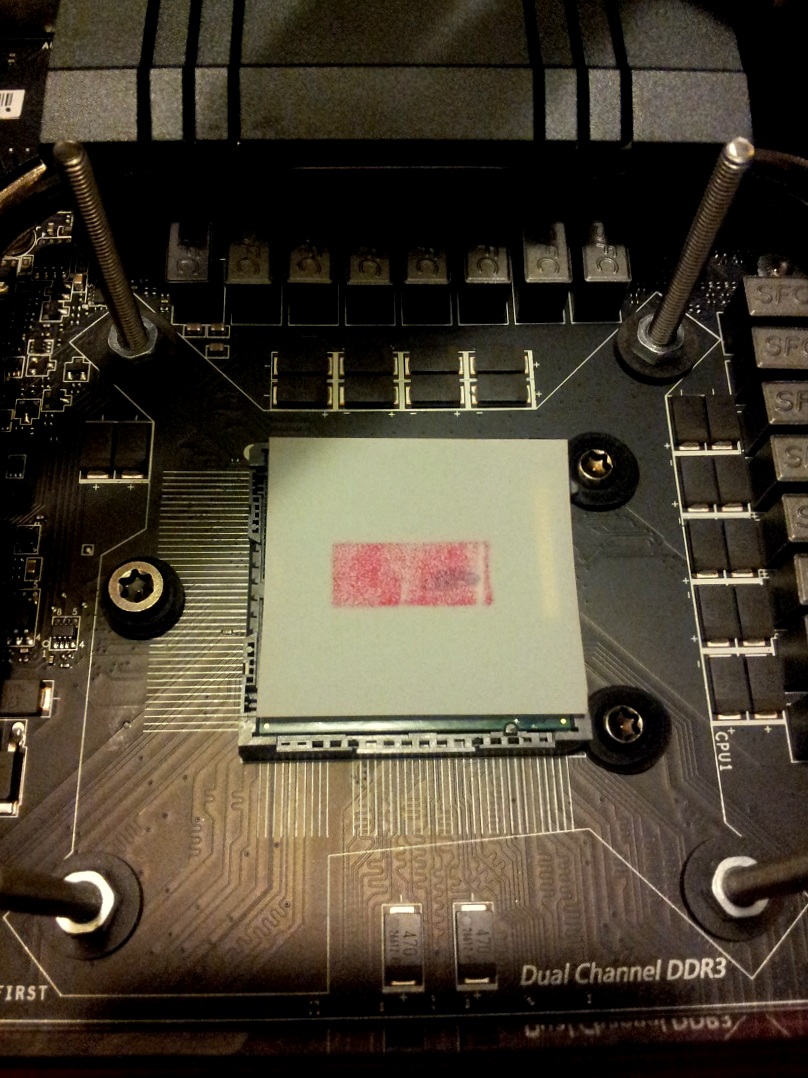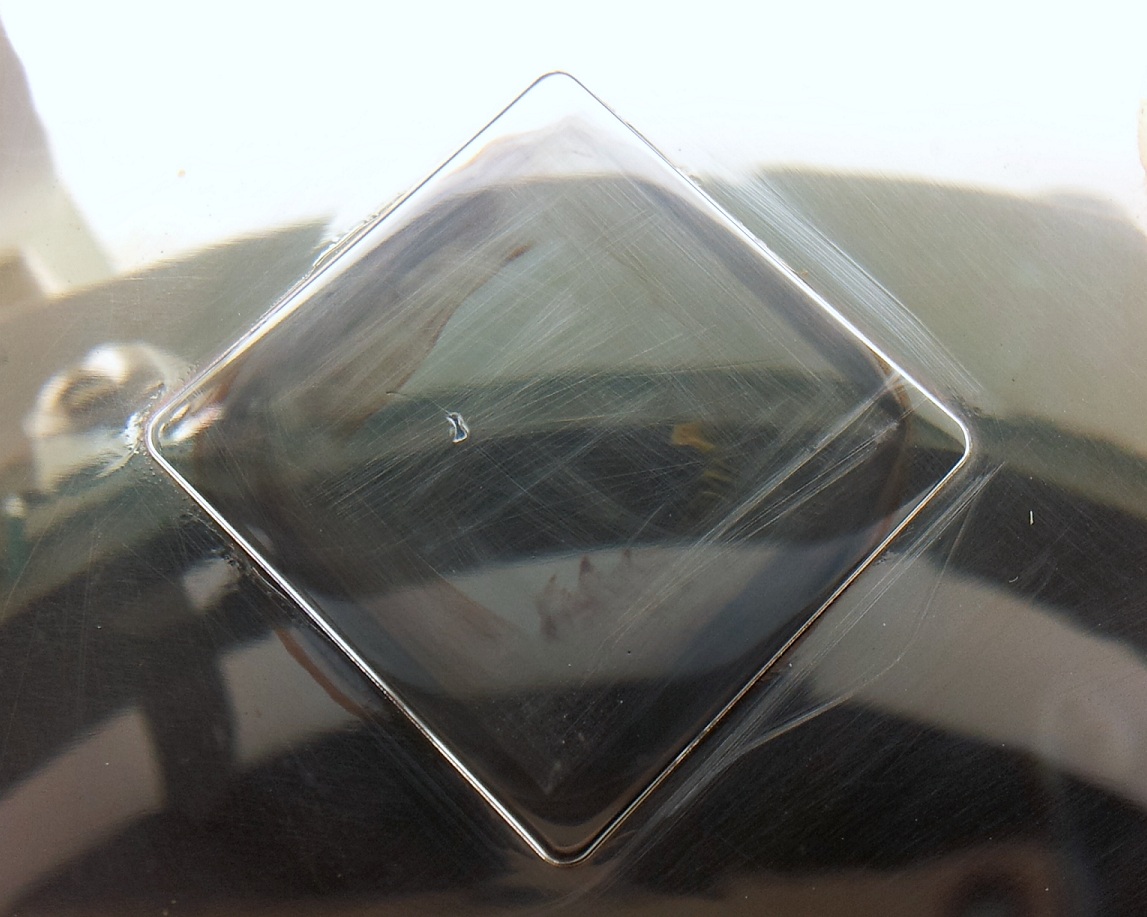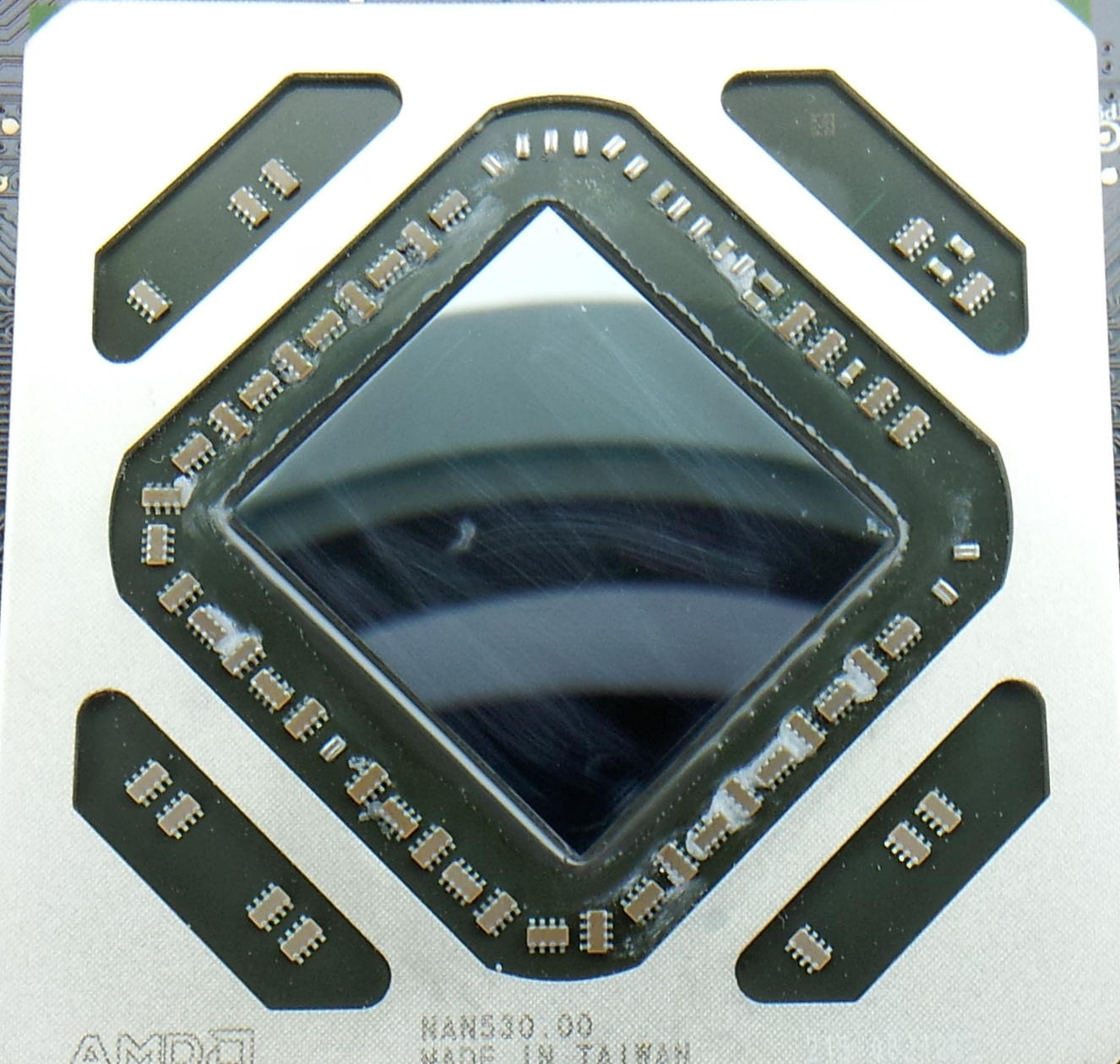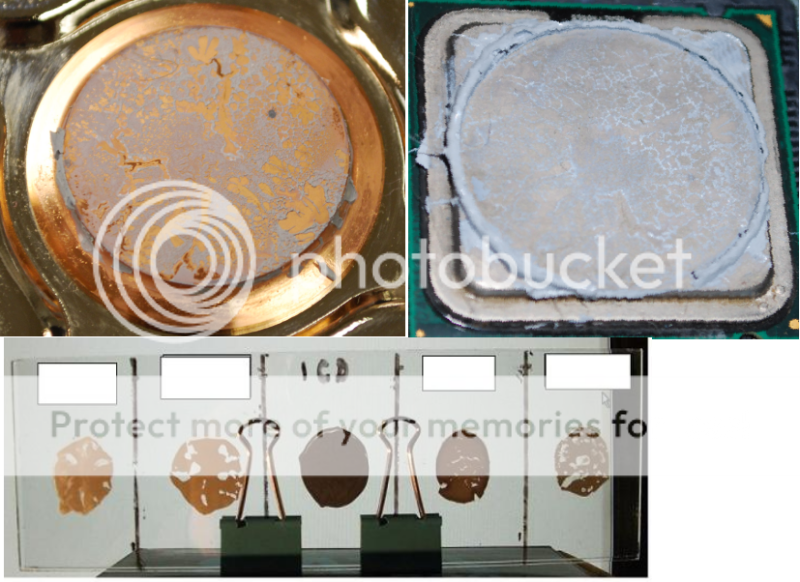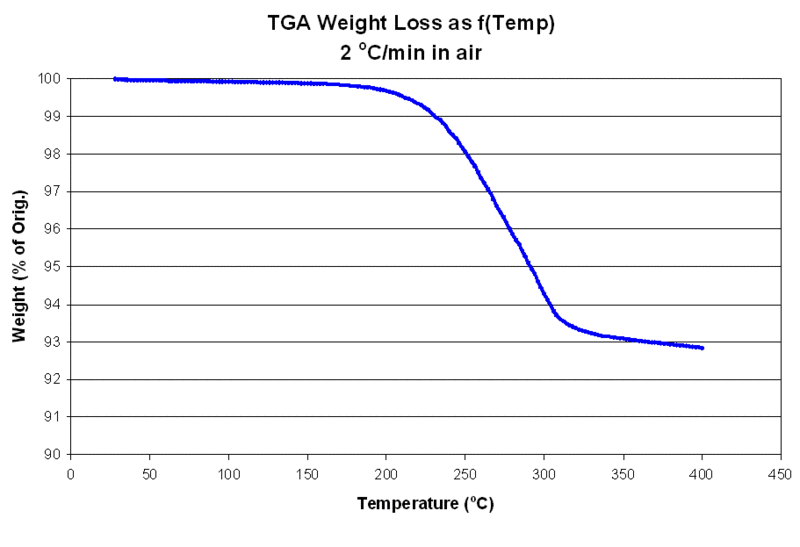IC Diamond should re-do their formula and make it into a super smooth synthetic liquid formula. Something that goes on like liquid and creates a nice bond like liquid Ultra.
High viscosity (thickness) a desirable characteristic in a thermal compound and is the very definition of quality/reliability vs a highly liquid compound
OEM's Spec bulk loadings actually recommend above a 90+ % for reliability. IC Diamond boasts a 94% bulk loading which includes 92% diamond + miscellaneous material.
Below is an example from the MPC giveaway of a more liquid compound where the compound failed after400 hours it both pumped out and baked out.
The second image are from a test we ran comparing your more liquid retail compounds to IC Diamond many of which have be tested in this giveaway. The test was run for 20 hours at 150C, the center picture labeled ICD is IC Diamond The test highlights the stability of ICD7. The competition compounds feature the formation of voids, and span the range of initial failure to complete failure. IC diamond was observed to have no visible points of failure under these conditions. The picture is back lighted so the void formation is clearly visible
There are different kinds of thermal resistance. One is contact resistance which the retail compounds mostly rely on by being of higher liquid content so they flow real nice into the voids and air gaps and with great or low contact resistance enhances thermal performance so that out of the gate many users are thrilled with the performance. Instant gratification
Low viscosity, highly liquid thermal pastes enjoy an initial success but also make them susceptible to Pump Out. Pump Out occurs when the system heats up, the joint compresses, and a little of the liquid is pushed out. After a sufficient number of cycles, the paste has shrunken in size leaving voids and causing a contact resistance failure. A variant of compound failure, Bake Out , occurs when consistently high thermal stress causes loss of the liquid by evaporation. Pump Out and Bake Out reflect the research of many in the thermal community and hundreds of technical papers on the exist on the well-documented issue.
Liquid is a necessary component where thermal pastes are concerned otherwise you would be applying a powder. IC Diamond uses much less liquid so consequently is much less prone to failures as the liquid is wicked or baked away The shrinkage of the compound is almost non existent due to the low liquid volume content to begin with and so maintains contact/ thermal performance for extended periods and by design to set up into a crayon like consistency over time, still pliable and relying on the high bulk Diamond conductivity for performance as you are left with basically diamond held coherently together with the polymeric binders and is easily removed when re-liquefied with a solvent
So in short the reason it is thick is that it is harder to pump a solid than a liquid and provides a basis for long term extended reliability.
High viscosity or thickness of compound is a positive feature to seek out and necessary for for long term reliability
It's easy to design a compound for performance and it is also easy to design for reliability
It is very hard to do both in one package
I've never used pressure paper before, I feel dumb now, lol.


 j/k loving this TIM might replace whats on my GPU at some point.
j/k loving this TIM might replace whats on my GPU at some point.



